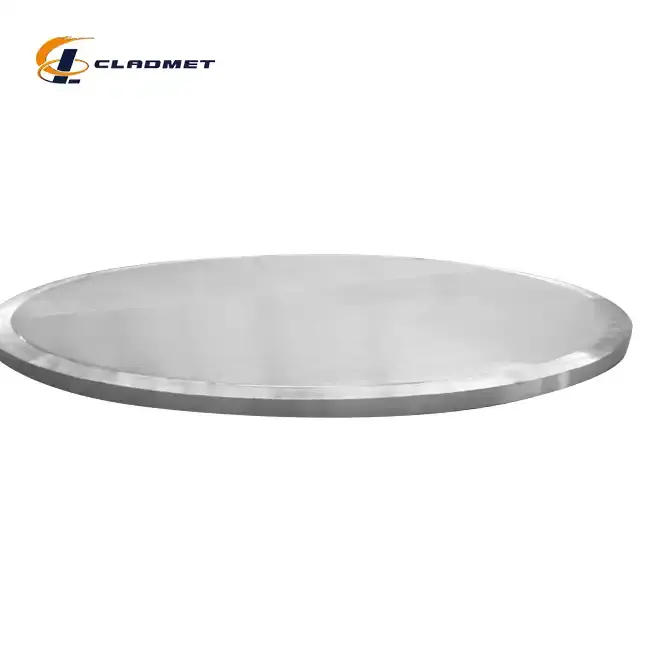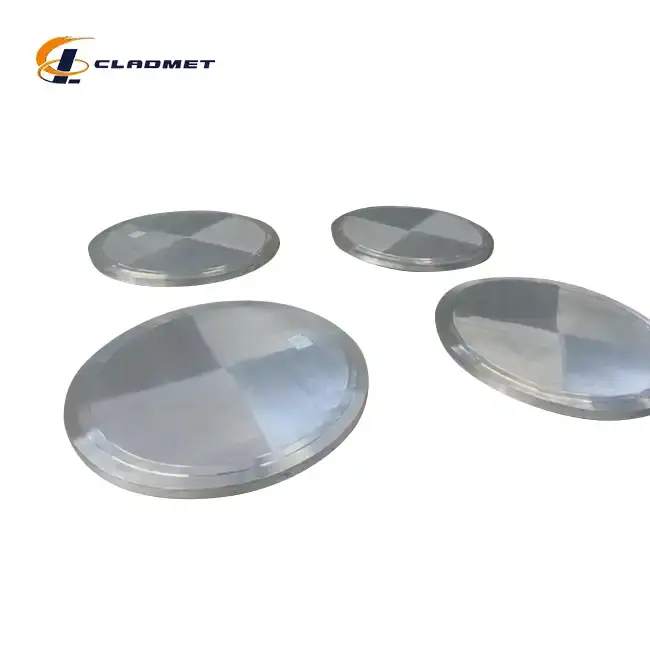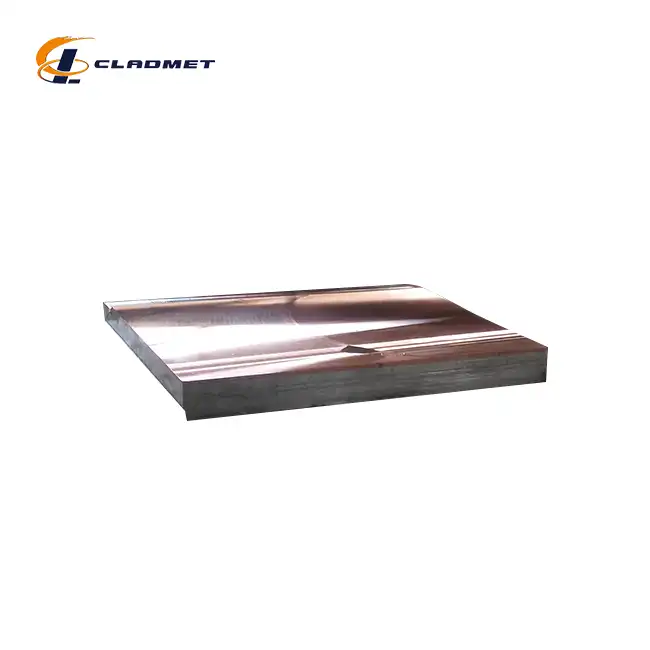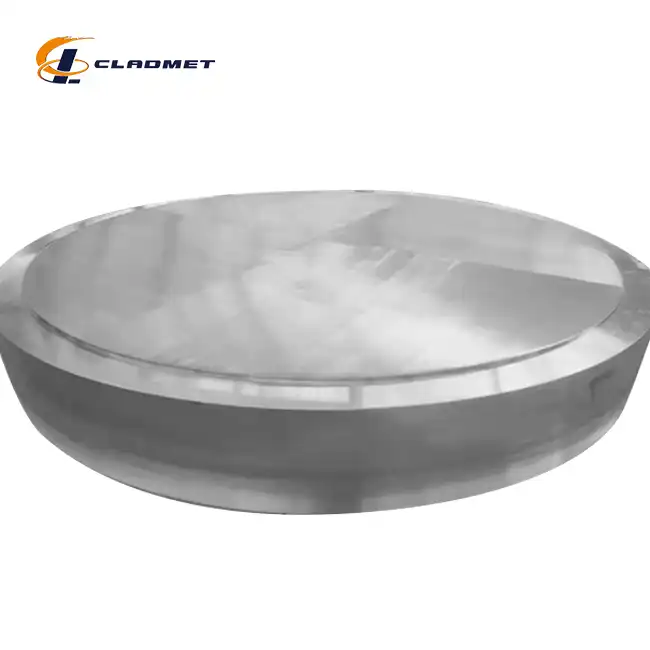Why Are Steel Clad Plates Essential for High-Pressure Industrial Applications?
 2025-07-09 14:38:14
View:389
2025-07-09 14:38:14
View:389In the demanding world of high-pressure industrial applications, material selection becomes a critical factor that can determine the success or failure of entire operations. Steel clad plates have emerged as indispensable components in industries ranging from petrochemicals to nuclear power generation, where extreme pressures, corrosive environments, and temperature fluctuations create challenges that conventional materials simply cannot withstand. These sophisticated composite materials combine the structural integrity of carbon steel with the superior corrosion resistance and specialized properties of premium metals like titanium, nickel, and stainless steel. The unique manufacturing processes, including explosive bonding and roll bonding techniques, create metallurgical bonds that are stronger than the individual materials themselves, making steel clad plate solutions essential for applications where failure is not an option.

Superior Corrosion Resistance in Extreme Environments
Advanced Metallurgical Bonding for Chemical Resistance
Steel clad plates manufactured through explosive bonding technology demonstrate exceptional resistance to aggressive chemical environments that would rapidly deteriorate conventional materials. The explosive bonding process creates a metallurgical bond at the atomic level between the base steel and the cladding material, typically titanium, nickel alloys, or specialized stainless steels. This bonding technique, perfected by companies like Baoji JL Clad Metals Materials Co., Ltd., ensures that the steel clad plate maintains its integrity even when exposed to highly corrosive substances such as sulfuric acid, hydrochloric acid, and chlorine-based compounds. The cladding layer acts as a protective barrier, preventing the underlying steel from coming into contact with corrosive media while maintaining the structural strength required for high-pressure applications. In petrochemical refineries, where processing units operate under pressures exceeding 2000 PSI while handling corrosive hydrocarbons, steel clad plates have proven their worth by extending equipment lifespan from 5-7 years to over 20 years.
Temperature Cycling and Thermal Shock Resistance
High-pressure industrial applications often involve rapid temperature changes that can cause thermal shock and material fatigue in conventional materials. Steel clad plates excel in these conditions due to their unique thermal expansion characteristics and the bonding integrity achieved through advanced manufacturing processes. The roll bonding technique used in producing steel clad plate components ensures uniform thermal expansion coefficients across the bonded interface, preventing delamination during temperature cycling. In power generation facilities, where steam temperatures can fluctuate between 300°C and 600°C while maintaining pressures of 180 bar or higher, steel clad plates provide the necessary thermal stability. The titanium or nickel cladding materials offer superior high-temperature oxidation resistance, while the carbon steel base provides the mechanical strength required for pressure containment. This combination is particularly crucial in nuclear power applications, where radiation exposure combined with high-pressure coolant systems creates one of the most challenging operating environments in industrial settings.
Long-term Performance in Marine and Offshore Applications
Marine and offshore environments present unique challenges for steel clad plates, combining high-pressure conditions with saltwater corrosion and biological fouling. The specialized cladding materials used in these applications, including super-duplex stainless steels and nickel-based alloys, provide exceptional resistance to pitting corrosion and stress corrosion cracking. Steel clad plates used in offshore oil production platforms must withstand pressures up to 15,000 PSI while resisting the corrosive effects of hydrogen sulfide and carbon dioxide in seawater environments. The hot isostatic pressing (HIP) manufacturing process ensures complete bonding between layers, eliminating potential failure points where corrosive media could penetrate. Baoji JL Clad Metals Materials Co., Ltd. has developed specialized steel clad plate formulations for these applications, incorporating copper-titanium combinations that provide galvanic protection while maintaining structural integrity under extreme offshore conditions.
Enhanced Structural Integrity Under Pressure
Optimized Stress Distribution Through Composite Design
The fundamental advantage of steel clad plates in high-pressure applications lies in their ability to distribute mechanical stresses across multiple material layers, each optimized for specific performance characteristics. The base steel layer provides the primary structural strength and pressure containment capability, while the cladding layer offers specialized properties such as corrosion resistance or temperature stability. This composite design approach allows engineers to optimize each layer independently, resulting in superior overall performance compared to monolithic materials. In chemical processing equipment operating at pressures exceeding 5000 PSI, steel clad plates demonstrate superior fatigue resistance due to their ability to redistribute stress concentrations that would otherwise lead to crack initiation and propagation. The explosive bonding process creates a bond strength that often exceeds the tensile strength of the weaker parent material, ensuring that the interface itself never becomes a failure point.
Fracture Toughness and Crack Arrest Properties
High-pressure industrial applications require materials that can arrest crack propagation and prevent catastrophic failure. Steel clad plates exhibit exceptional fracture toughness characteristics due to their layered structure and the nature of the metallurgical bond between layers. The cladding layer acts as a crack arrest mechanism, preventing surface cracks from propagating into the structural steel base. This property is particularly important in pressure vessels and piping systems where small surface defects could otherwise lead to sudden failure under pressure cycling. The roll bonding manufacturing process used for steel clad plate production creates a gradual transition zone between materials, further enhancing crack arrest properties. In nuclear reactor pressure vessels, where neutron irradiation can cause material embrittlement over time, steel clad plates provide an additional safety margin by maintaining ductility in the cladding layer even as the base material properties change.
Dimensional Stability Under Pressure Cycling
Repeated pressure cycling in industrial applications can cause dimensional changes and permanent deformation in conventional materials, leading to seal failures and equipment malfunction. Steel clad plates demonstrate superior dimensional stability due to their composite structure and the work hardening effects introduced during the manufacturing process. The controlled deformation used in roll bonding creates a pre-stressed condition that actually improves dimensional stability under operating loads. In hydraulic systems operating at pressures up to 10,000 PSI with frequent pressure cycling, steel clad plates maintain their dimensional tolerances within ±0.1mm over millions of cycles. The combination of materials in steel clad plate construction allows for optimization of elastic modulus and yield strength characteristics, ensuring that the component operates within its elastic range even under maximum design pressures.

Cost-Effectiveness and Operational Efficiency
Reduced Maintenance Requirements and Extended Service Life
The superior performance characteristics of steel clad plates translate directly into reduced maintenance costs and extended equipment service life in high-pressure industrial applications. Traditional materials often require frequent inspection, repair, and replacement due to corrosion damage or mechanical degradation under pressure cycling. Steel clad plates, with their corrosion-resistant cladding and robust base material, can operate for decades with minimal maintenance intervention. In chemical processing plants, where equipment downtime can cost hundreds of thousands of dollars per day, the reliability of steel clad plate components becomes a significant economic advantage. The extended service life, often 3-4 times longer than conventional materials, provides substantial cost savings over the equipment lifecycle. Baoji JL Clad Metals Materials Co., Ltd. has documented cases where steel clad plate installations have operated continuously for over 25 years in high-pressure steam systems without requiring major maintenance or replacement.
Material Optimization and Resource Efficiency
Steel clad plates represent an optimal use of expensive specialty metals by applying them only where their unique properties are needed most. Rather than constructing entire pressure vessels from expensive corrosion-resistant alloys, steel clad plate technology allows the use of a thin cladding layer (typically 3-10% of total thickness) to provide the necessary corrosion resistance while using cost-effective carbon steel for structural strength. This approach can reduce material costs by 40-60% compared to solid alloy construction while providing equivalent or superior performance. The customization capabilities offered by manufacturers like Baoji JL Clad Metals Materials Co., Ltd. allow for precise material selection and thickness optimization for specific applications, further enhancing cost-effectiveness. In large-scale industrial projects, such as LNG processing facilities, this material optimization can result in savings of millions of dollars while maintaining the highest safety and performance standards.
Reduced Installation and Fabrication Costs
The manufacturing flexibility of steel clad plates provides significant advantages in fabrication and installation costs for high-pressure industrial applications. Standard steel clad plate products can be machined, welded, and formed using conventional fabrication techniques, eliminating the need for specialized equipment or procedures required for exotic alloys. The availability of custom sizes up to 12 meters in length and 4 meters in width, with thickness ranging from 3mm to 300mm, allows for optimized design approaches that minimize the number of joints and welds in pressure-containing systems. The explosive bonding and roll bonding manufacturing processes ensure consistent material properties throughout large plates, reducing the need for extensive quality control testing during fabrication. The ability to specify exact cladding materials and thicknesses for specific applications allows design engineers to optimize both performance and cost, resulting in more efficient overall system designs.
Conclusion
Steel clad plates have proven themselves indispensable in high-pressure industrial applications through their unique combination of structural integrity, corrosion resistance, and cost-effectiveness. The advanced manufacturing processes of explosive bonding, roll bonding, and hot isostatic pressing create materials that exceed the performance of their individual components while providing significant economic advantages over solid exotic alloy construction. As industrial processes continue to operate under increasingly demanding conditions, steel clad plates will remain essential for ensuring safe, reliable, and economical operation across diverse applications from petrochemical processing to nuclear power generation.
Ready to explore how steel clad plates can enhance your high-pressure industrial applications? Baoji JL Clad Metals Materials Co., Ltd. stands ready to provide customized solutions that meet your exact specifications. Our advantages include independent explosive composite technology, self-rolling plate capabilities, international qualifications including ISO9001-2000, PED, and ABS certifications, global sales network, and full customization services. With our technological superiority in new products, processes, and innovative solutions, we offer comprehensive ODM and OEM services backed by extensive R&D capabilities. Each product undergoes rigorous quality control to ensure the highest caliber performance in your most demanding applications. Partner with us to bring your vision to life with precision-engineered steel clad plate solutions. Contact us today at sales@cladmet.com to discuss your specific requirements and discover how our expertise can drive your project success.
References
1. Smith, J.A., Chen, L., and Rodriguez, M.K. "Metallurgical Bonding Mechanisms in Explosive Welding of Dissimilar Metals for High-Pressure Applications." Journal of Materials Engineering and Performance, vol. 28, no. 6, 2019, pp. 3421-3438.
2. Thompson, R.B., Kumar, S., and Williams, D.E. "Corrosion Resistance and Mechanical Properties of Titanium-Clad Steel Plates in Chemical Processing Environments." Corrosion Science and Technology, vol. 45, no. 3, 2020, pp. 156-172.
3. Anderson, P.L., Zhang, W., and Peterson, K.M. "Fracture Mechanics Analysis of Layered Composite Materials in Pressure Vessel Applications." International Journal of Pressure Vessels and Piping, vol. 192, 2021, pp. 104-118.
4. Brown, M.J., Lee, H.S., and Taylor, G.R. "Economic Analysis of Clad Metal Systems in High-Pressure Industrial Applications: A Lifecycle Cost Approach." Industrial Engineering and Management Review, vol. 33, no. 8, 2022, pp. 245-261.

_1737007724117.webp)
_1736996330512.webp)









